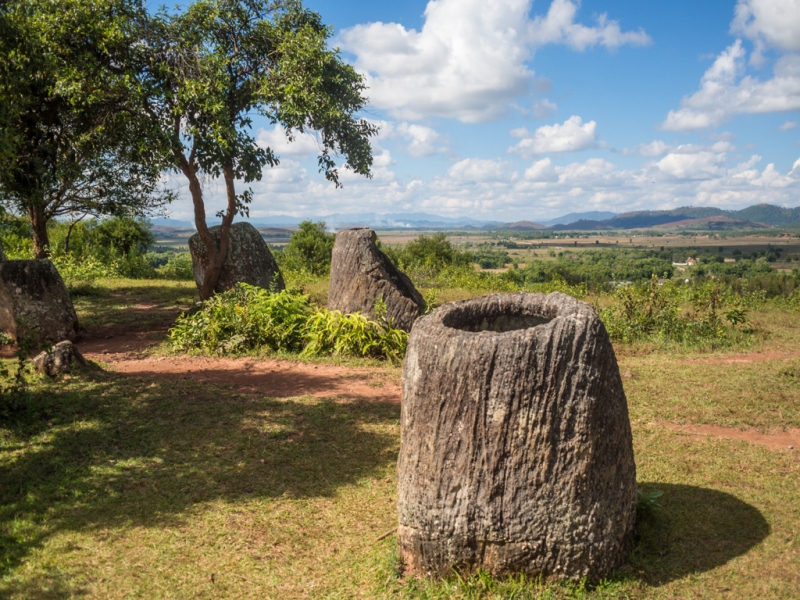
In the Laotian province of Xiang Khouang there is an amazing and so far little-studied attraction of this country – the Valley of Jars (on the map). At the foot of the Annam Range, hundreds of huge vessels made of granite, sandstone and rock protrude directly from the ground. Their diameter ranges from half a meter to three, and their weight reaches 6 tons.
I want to go to Laos!
The appearance of the vessels is quite simple and unpretentious. They somewhat resemble the stupa of our Baba Yaga. Near some of them you can find stone disks, which, judging by their size, were once used as lids. Of the total number of jugs, only one was found with decoration – a fragment of a bas-relief that depicts a swimming man.
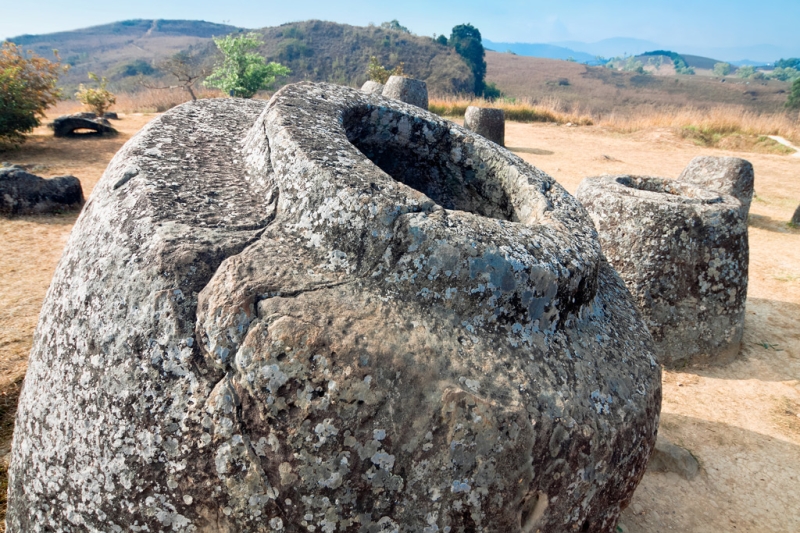
Almost nothing is still known about the appearance of stone vessels. The Valley of Jugs was discovered in the 30s of the 20th century by French archaeologists. During excavations, scientists came to the conclusion that the age of these finds ranges from 1500 to 2000 years. There are still debates about the purpose of the vessels and the technology of their production.
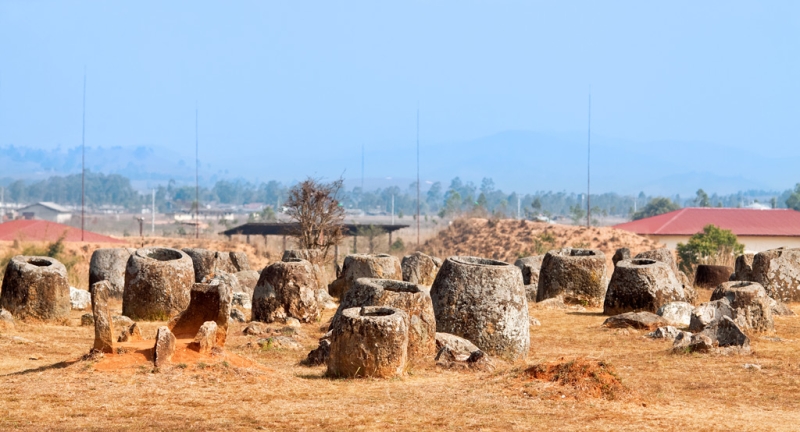
There are two main hypotheses explaining the appearance of stone jugs in the valley. The first is based on the fact that similar vessels were discovered in Thailand and northern India. They are located near roads that used to be a busy trade route. In this regard, scientists suggest that local merchants stored their goods or even ordinary water in such jugs, because rain in these areas is very rare.
The second hypothesis comes from the results of several archaeological expeditions. During excavations, remains of human bodies were found in and around the jars. According to historians, the valley served as a kind of morgue, and the bodies of the dead were stored in jars. For some time, the remains, placed in vessels, decomposed, and then they were buried in the ground.
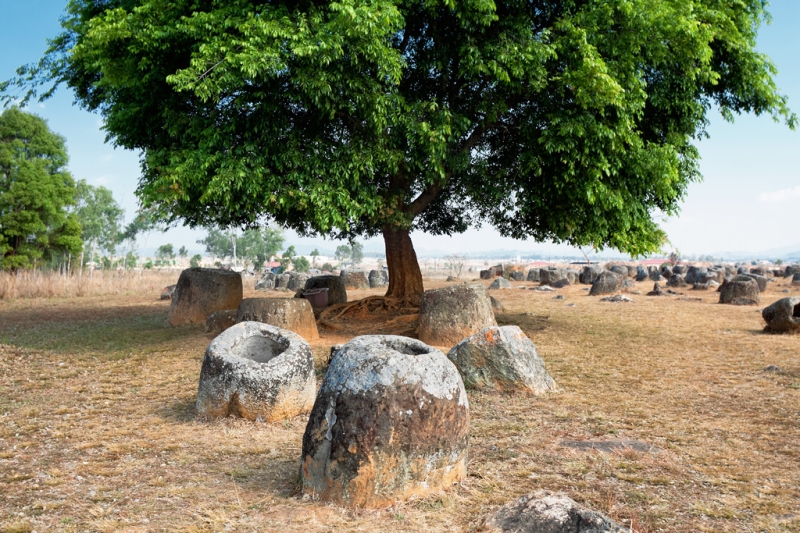
Perhaps the final answer will be found in the coming years. For 50 years, serious archaeological excavations in this place were impossible. The war in Vietnam and its consequences interfered. During the conflict, the territory of the Valley of Jars was repeatedly bombed by US aircraft. Many vessels were destroyed, and the ground still stores ammunition, which is sometimes used to blow up local residents. It is for this reason that the Valley of Jars was closed to tourists and scientists for a long time.
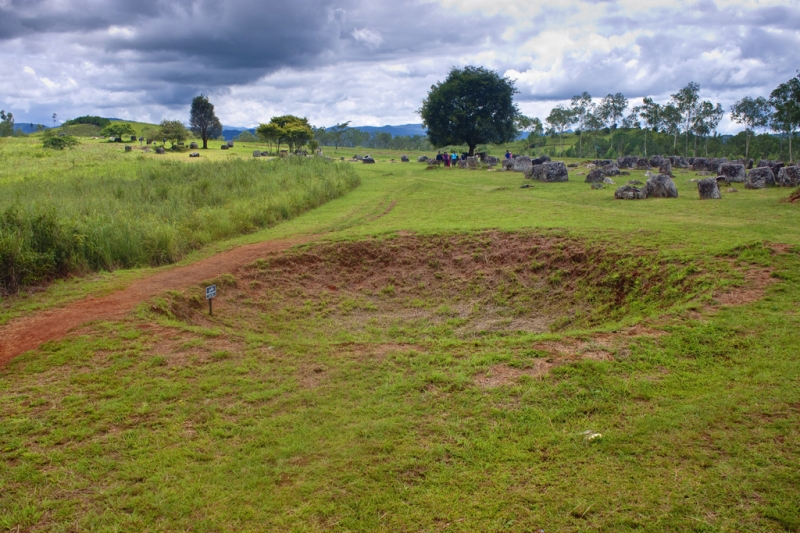
Bomb crater on Kuvshinov Plain
Fortunately, the Laotian authorities are gradually clearing the foot of the Annam Range from traces of war. Today, three sites with jugs are already open to tourists. The most popular of them is called Thong Hai Hin. It is located 10 kilometers southwest of the city of Phonsavan. There are about 250 stone vessels, the largest of which weighs 3.7 tons, as well as a cave in which, according to local beliefs, giants burned jugs for their needs. Entrance to the site is paid. The ticket price is approximately 10,00 kip (80 rubles). The site is open to tourists from 6:30 to 18:30.
If you don’t want to travel the Valley of Jars on your own, you can join one of the tour groups. You can buy a ticket at almost any travel agency in the city of Phonsavan. In this case, the cost of visiting all three sites will be on average 150,000 kip (1,200 rubles) per person (excluding the price of the entrance ticket).
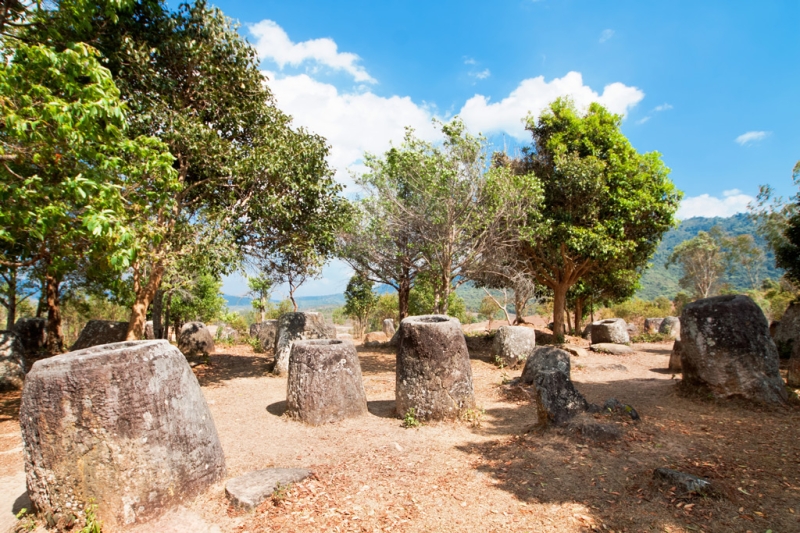
Currently, the Laotian authorities are negotiating with UNESCO to assign World Heritage status to the Valley of the Jars. In this case, they will be able to receive funding to clear the sites of ammunition and completely open the valley to tourists.
Unfortunately, it is impossible to fly directly from Russia to Laos. So you will have to change planes in Thailand, Cambodia, China or Vietnam. The best option is to fly through Bangkok, from where there are regular flights to Vientiane. From the capital of Laos, planes fly to Phonsavan several times a week; the flight lasts about 30 minutes. The bus covers the distance between cities in 8 hours, but in this case you need to be prepared for shaking and stuffiness. Roads in this region are not in the best condition.
For a trip to Laos, use the flight + hotel package

Author: Roskin Mikhail
You may be interested in:
Malaysia: what UNESCO protects?
Inle Lake: Asian Venice
10 things to do in Vietnam

